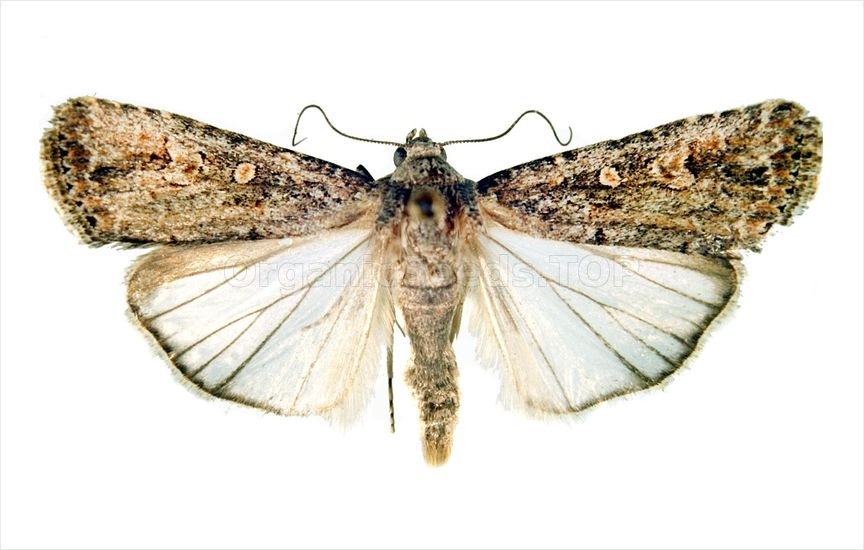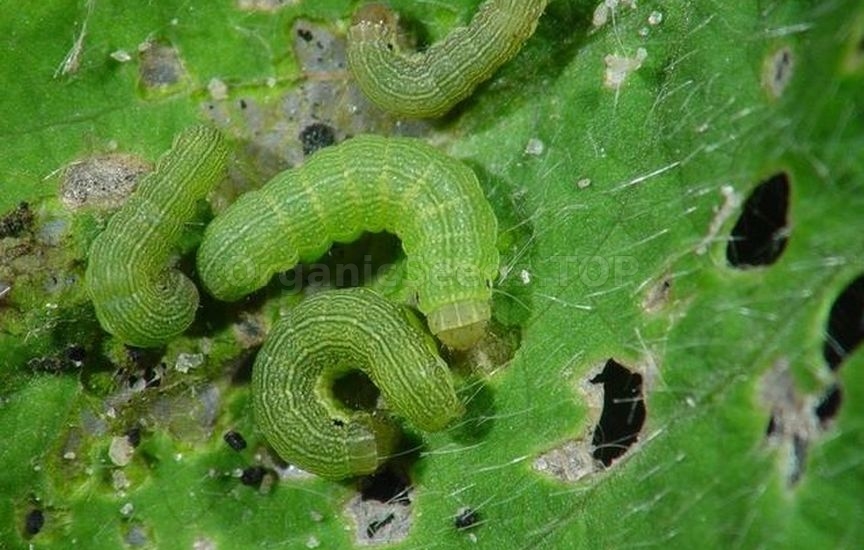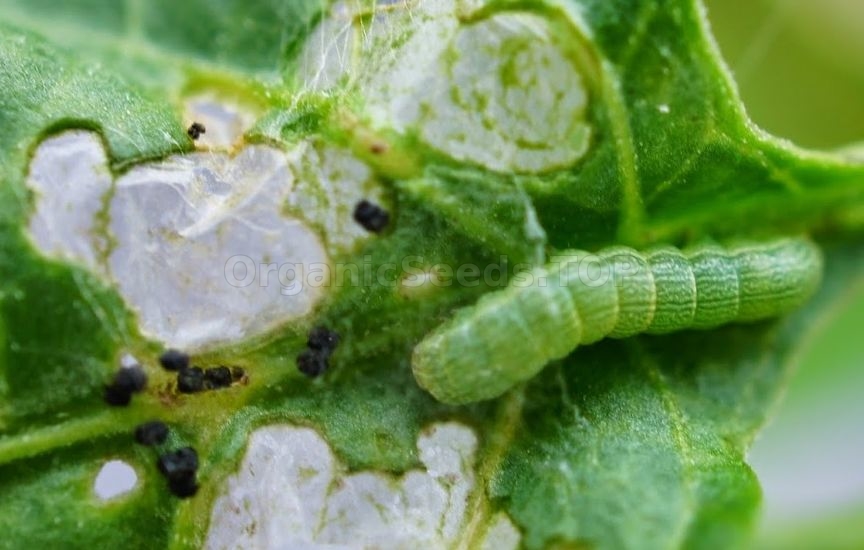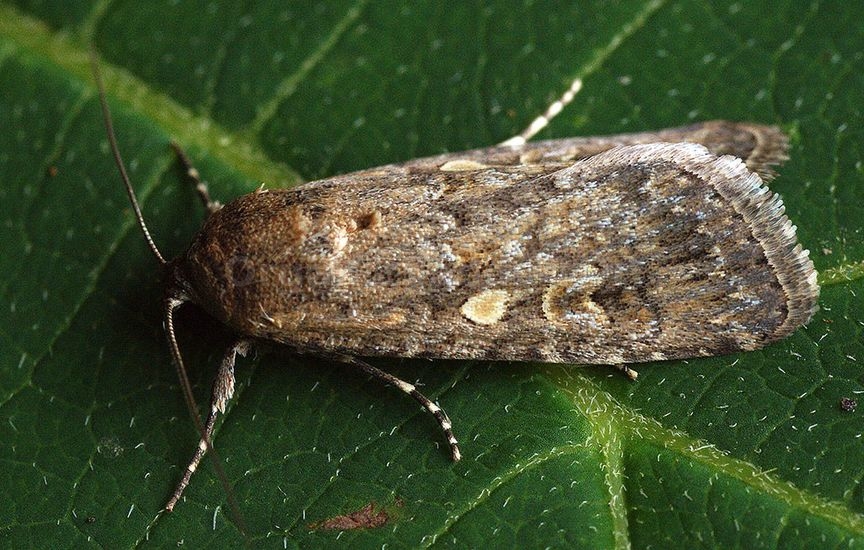Small mottled willow moth (tomato) - «Spodoptera exiqua» |
 Small mottled willow moth (tomato) - Tomato cutworm (Carandrina) - broad polyphagous. The list of forage plants includes 185 species from 50 families. Caterpillars are harmful. Feeds on cotton, alfalfa, sugar beets, corn, tobacco, peanuts, sesame, soybeans, tomatoes, potatoes, peas, turnips, eggplants, watermelons, clover, sainfoin, young citrus fruits, apple trees, quince, grapes, oak trees, elms, yellow acacia , chrysanthemums, tea. Development is complete. Reproduction is bisexual. The pupae overwinter. Depending on the climate of the area of residence, from 2 to 10 generations develop during the growing season. MorphologyImago
Wingspan 23-24 mm. The anterior pair is grayish-brown. The transverse lines are double, blurred. The kidney-shaped spot has a brown tint. The round spot is rusty orange. The back pair of wings are white with a slight pink tint.  Sexual dimorphism Individuals of different sexes differ in the structure of their genital organs. Egg Diameter 0.5 mm. The covers are yellowish-green. Larva Length 25-30 mm. Color varies from green to brown. On the dorsal side there are thin longitudinal hair lines, on the sides there is a wide dark stripe, under which there are light yellow stripes. The spiracles have white spots on the abdominal segments. The ventral side is light. The prothoracic spiracles are slightly larger than those on the 1st abdominal segment. The spiracles of the abdomen are located entirely in the supraspiracular strip. The mandibles of the larvae have five external teeth, serrated along the edges. Pupa Length 13-14 mm. The integument is yellowish-brown, shiny. There are a pair of small spines on the cremaster and two small spines on the ventral side. DevelopmentImago
Butterfly flights are observed from May to the end of October. The development periods of different generations overlap each other. For the final maturation of reproductive products, butterflies need additional nutrition. Individuals of different generations are found from May to October.  Mating period Females begin laying eggs 1-3 days after emergence. Fecundity varies from 300 to 1700 eggs, sometimes more than 2000. The most fertile butterflies are the first generation. Eggs are laid in three to four heaps, up to 250 in each. Females place heaps on the underside of weed leaves and cover them with gray hairs from the abdomen, so that the shelter looks like a small felt. Egg The embryo develops from 2 to 10 days. The duration of development depends on the ambient temperature. Larva After rebirth, the caterpillars immediately begin feeding. First they skeletonize the leaves, later they perforate them, leaving only large veins. The development of caterpillars lasts 14-28 days. Young caterpillars concentrate on weeds, while older ones move on to cultivated plants. Pupa Caterpillars pupate in the soil at a depth of 3-5 cm, in an oval cradle. The development of the pupa lasts from 7 to 28 days. The pupae overwinter.  Abiotic factorsPolycyclic species. In the southern part of Europe, 2-3 generations develop during the growing season, in Central Asia - up to 6-7, in subtropical and tropical climates - up to 10 generations per year.
Small mottled willow moth (Carandrina) is a broad polyphagous species. Caterpillars damage by eating buds, flowers, and young leaves of 185 plant species from 50 families, including 133 species of cultivated plants. They prefer legumes, bluegrass, nightshade, and goosefoot.
You may need:«Small mottled willow moth (tomato)» trapGlue trap (single adhesive cardboard) 205x125 mmPheromone traps |
|
|
